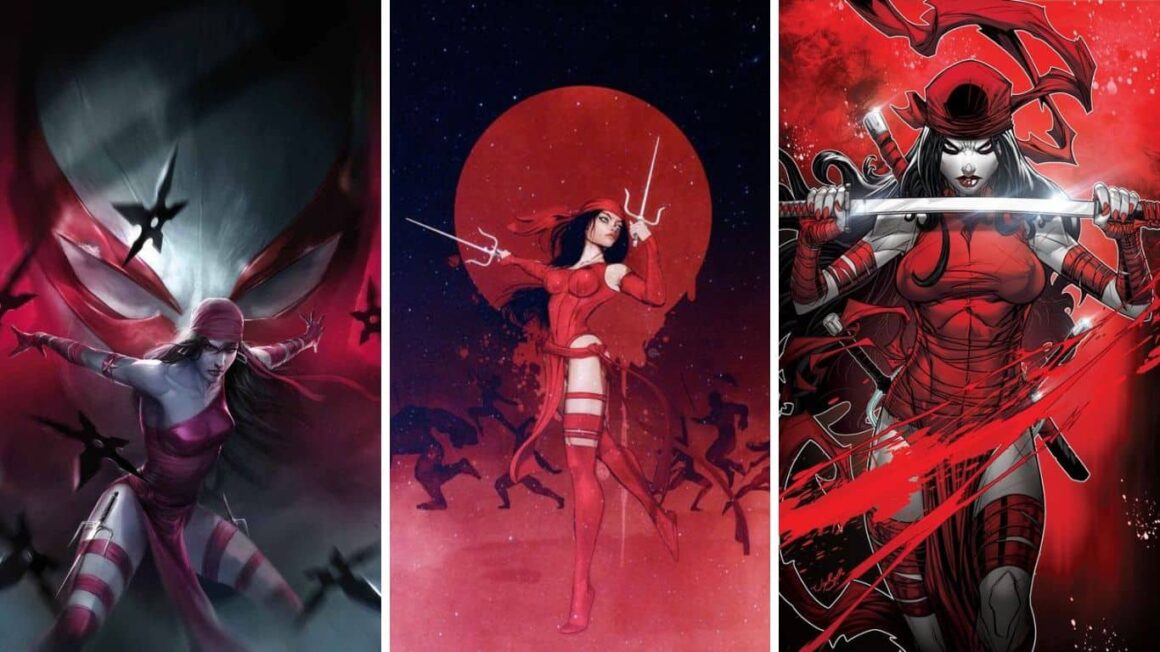As an assassin with exceptional martial arts skills, Electra Natchios embodies the duality of heroism and villainy, making her one of the most intriguing figures in the Marvel Universe. Created by writer Frank Miller and artist Klaus Janson, Electra made her first appearance in Daredevil #168 in January 1981. Miller and Janson masterfully introduced Electra into the Daredevil mythos, instantly captivating readers with her enigmatic presence. Originally intended as a one-off character, Electra’s popularity soared, leading to her expanded role in subsequent stories and the eventual establishment of her own solo series. In this blog, we delve into the captivating origin story of Electra, tracing her path from tragedy to redemption and the impact she has made along the way.
Early Life and Background
The early life and background of Electra (originally Elektra Natchios) are shrouded in tragedy and conflicting accounts of her family history. While two contradictory versions of her mother’s death exist, both narratives share a common thread of loss and a pivotal event that shaped Elektra’s life.
In one account, depicted in Elektra: Root of Evil #1–4 (March–June 1995), Elektra’s mother, Christina, is killed by assassins hired by Orestez, Elektra’s own half-brother. This act of violence occurs as part of a larger conspiracy, highlighting the presence of dark forces surrounding Elektra’s family.

In another account, as portrayed in Elektra #18 (1995), Christina’s demise is attributed to an insurrectionist during the Greek Civil War. Regardless of the circumstances, both versions agree that Christina tragically passes away, giving birth to Elektra prematurely just before her death.
Following her mother’s untimely demise, Elektra’s safety is threatened once again when she is targeted by kidnappers at the tender age of nine. However, her half-brother Orestez, who had become a skilled martial artist after leaving home, intervenes and dispatches the assailants. Recognizing the need to protect Elektra, Orestez advises their father, Hugo, that she should learn self-defense.
Hugo, heeding Orestez’s advice, hires a sensei to teach Elektra the art of martial arts. Under the guidance of her martial arts mentor, Elektra begins her journey towards mastering various fighting styles, forging the path that would ultimately lead her to become the formidable assassin known as Electra.
Becoming an Antihero
As Elektra transformed into the enigmatic figure known as Electra, her path led her down a morally ambiguous road, blurring the lines between heroism and villainy. Embracing her lethal skills and reputation as an assassin, Electra became an antihero with a complex set of motivations and alliances.
Electra’s association with the Hand, an organization steeped in secrecy and darkness, played a significant role in shaping her antiheroic persona. She operated in the shadows, accepting contracts and carrying out assassinations for the highest bidder. Her actions often put her at odds with conventional notions of heroism, as she walked a fine line between vigilantism and criminality.
During this period, Electra forged connections with various supervillains, utilizing her unique skill set to aid their nefarious schemes. These alliances, however temporary or reluctant, showcased her pragmatism and ability to navigate the treacherous underworld of crime.

Despite her questionable alliances, Electra occasionally found herself embroiled in conflicts where her actions aligned with the greater good. Her motivations were not always driven by personal gain but rather a sense of protecting the innocent and seeking justice for those who were wronged.
Electra’s moral ambiguity and willingness to make morally questionable choices set her apart from traditional heroes. She showcased a capacity for ruthlessness, yet there were glimpses of a code of honor and a desire to make amends for her past actions. Her complex nature added layers to her character, making her an intriguing figure for readers to dissect and explore.
Throughout her antiheroic journey, Electra encountered numerous challenges that tested her resolve and forced her to confront her own inner demons. These experiences contributed to her ongoing struggle between embracing her darker nature and striving for redemption.
Redemption and Heroic Acts
While Electra embraced her role as an antihero and operated in the morally gray areas, she also embarked on a journey of redemption, seeking to reconcile her past actions and find a sense of purpose beyond the shadows. This quest for redemption led her to engage in heroic acts that showcased her capacity for selflessness and growth.

One significant turning point in Electra’s path was her decision to distance herself from the criminal life and the influence of the Hand. This choice marked a pivotal moment of self-reflection and a desire to break free from the cycle of violence that had defined her existence.
As Electra severed ties with her former allies, she sought opportunities to utilize her skills for noble causes. She became involved with various superhero teams like daredevil and took part in missions that aimed to protect innocent lives and thwart the plans of formidable villains.
Electra’s journey of redemption and her participation in heroic acts further cemented her place in the Marvel Universe. Her growth as a character demonstrated that individuals, regardless of their past, have the potential to evolve and find redemption, making her a relatable and inspirational figure for readers.
Also Read: Ranking Top 10 Comics Characters Who Use Swords



